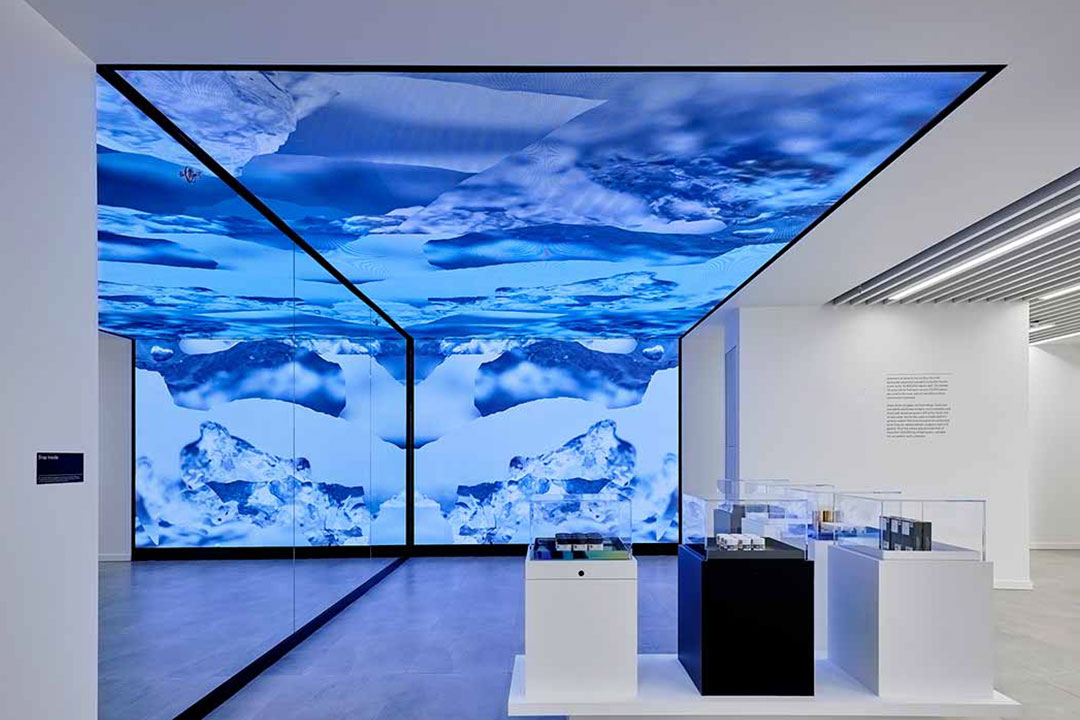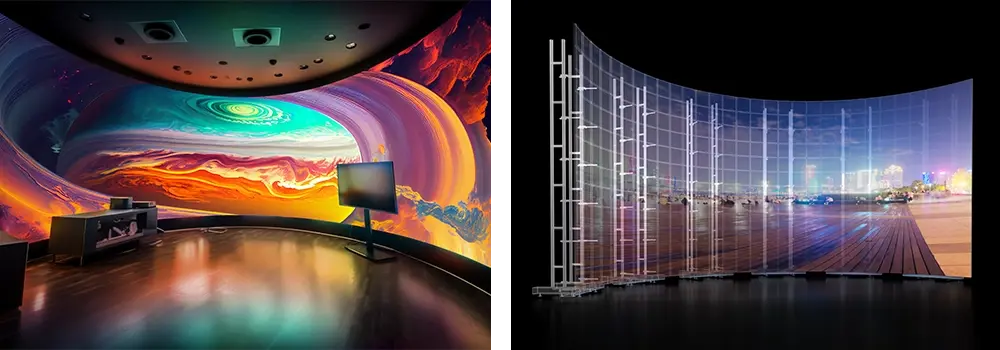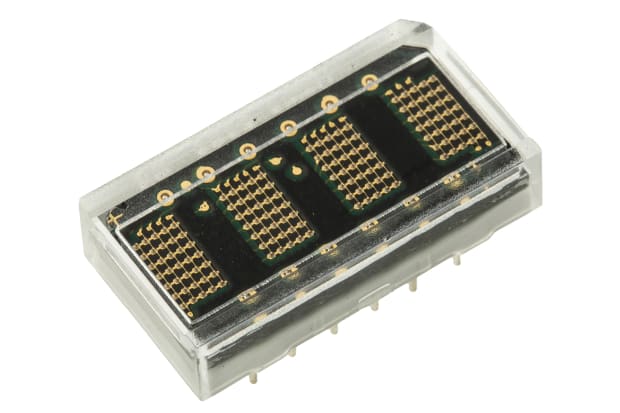Brightness and contrast ratio should be considered when evaluating LED displays. These two aspects have a large impact on clarity, visibility and overall quality of display, especially in different lighting conditions. This is why they are crucial:
1. Visibility in Different Lighting Conditions
Brightness The display's brightness is measured in nutritus. This is the number of candelas for each sq. meter. For outdoor displays, where ambient light is bright (like direct sunlight) the use of a high-brightness (typically at 5,000-10,000 Nits or greater) is essential to ensure that the content is visible and clear. Indoor displays typically require lower levels of brightness (around 500 to 1,500 nits) however, the brightness must be adjustable to accommodate various environments.
Applications: Brightness is necessary if you intend to use the display in bright areas or in the outdoors. Lack of brightness can render the display unusable because the information could be washed away or invisible in direct sunlight.
2. Image Quality and Clarity
Contrast Ratio - The ratio is defined as the difference between the brightest and darkest blacks displays produce. A higher ratio of contrast improves the clarity of an image, enhancing its sharpness and clarity. It is essential for displays with dynamic content like video or high-contrast photos.
Displays with high contrast ratios. They are better suited to more complicated content like movies, advertisements broadcasts, and other media. Displays with dark areas with low contrast might appear grayish, which reduces the impact of the content.
3. Color Accuracy in Visual Impact
Brightness and Color Accuracy Color Accuracy and Brightness play a significant aspect in the accuracy of color. Color accuracy can be improved with a display that has an even brightness. This is essential in branding, advertising, and other content areas where color accuracy is critical.
Contrast can enhance the perceived brightness. Even if two screens have the identical nit rating (or brightness) the screen with a higher contrast ratio will look more vibrant.
4. Energy Consumption
Brightness and Energy Efficiency Energy Efficiency and Brightness: Higher brightness levels typically need more power. It is therefore essential to balance brightness requirements with energy efficiency, especially for displays that operate 24/7 or are part large-scale installations. The advancements in LED technologies have resulted in more energy-efficient displays that can offer high brightness without consuming excessive energy.
5. Content Versatility
Different types of content require different levels of brightness the brightness requirements differ based on whether the content is text, static images or video. Text-based content, for example has a high contrast in order to make it more easy to read, whereas video content might require both brightness and contrast.
Application: In settings that have a variety of different types of content (e.g. display screens for events or screens for advertising) changing the brightness or contrast can help the display adapt to changing content requirements.
6. User Experience
Brightness Adjustability Displays that provide automatic or manual brightness adjustments provide an improved user experience by adjusting to the changing lighting conditions throughout the day. This enables the display to be always visible without causing eyestrain or the appearance of glare.
Contrast and Eye Comfort Contrast and Eye Comfort: A high contrast ratio can help reduce eye strain and make it easier for viewers to engage with the content for extended periods that is crucial for displays in public spaces, events, or retail settings.
Conclusion:
The contrast ratio and brightness are key factors to make sure that LED displays perform effectively in their intended environments, providing content which is vibrant, clear and easy to read. The performance of the display overall and user experience is greatly influenced the lighting conditions, whether indoors or outdoors in bright or dim conditions. By balancing the components of energy efficiency, content and display requirements with these considerations, you can choose the best display. Take a look at the top creative led displays for more info including led wall, led wall panels, led display screen rental, outdoor screen led, led wall panels, advertising displays, led screen display rental, video walls, led display rental, led screen transparent and more.

How Important Is The Refresh Rate In Researching Led Displays?
When researching LED display, how crucial is the rate of refresh Particularly in the case of LED displays that are used to display live content such as videos or live broadcasts. It is also a factor in interactive applications. The reason for this is essential:
1. Image Smoothness and Clarity
The refresh rate is defined as the number of updates per second (measured in Hertz or Hz) by which the display updates it's image. A higher refresh rate is more smooth and reduces flickering.
Importance. When it comes to displays that show videos or animations with rapid motion, a refresh rate above 3,840Hz is necessary to guarantee smooth and fluid motion. This is crucial for applications like sports arenas and concerts, or for digital signage, where a smooth visual performance can enhance the user's experience.
2. Flicker Free Performance
Flicker - Displays that have slow refresh rates can cause visible flickering. This is especially true when you view the screen via a camera or when watching slow-motion footage. Eye fatigue can result from flickering and strain, making it difficult to look at the display for prolonged periods.
Application: A high-refresh rate is ideal for environments which will be filmed or photographed for broadcasting studios, events and even the stage. It helps reduce flickering which guarantees a clear capture of the footage without visual artifacts.
3. Visual Quality in Various Lighting Situations
Impact on Brightness Impact on Brightness: A higher refresh rate can also impact the display's performance in different lighting conditions. A higher refresh rate, for instance, can ensure the quality of images in bright lighting conditions and avoid any visible flicker, which could reduce the effectiveness of your display.
Application: This is most relevant for outdoor displays performances, stage events, and other situations where the lighting conditions are constantly changing or are difficult to control.
4. Content Compatibility
Synchronization. It is necessary to synchronize the refresh rate with the content source. This could include a live broadcast, video player cameras, or live broadcast. The viewing experience can be negatively affected if refresh rates of the display as well as the content aren't properly synchronized.
Application Content from different sources in professional settings such as TV studios or large-scale venues for events Matching the refresh rates to the content frame rates is essential for smooth playback.
5. Improve Your Viewing Experience
Motion Handling High refresh rates decrease blurring of motion while providing more clear, detailed image. This is advantageous in situations such as gaming, sports broadcasting or other settings which show fast-moving action.
Application: For venues that feature sporting events, gaming or other content that is high-energy High-refresh rate guarantees that viewers are able to experience every detail with clarity.
6. Reduced strain on the eyes
Low refresh rates may result in eye fatigue during long watching periods. This can be a problem in environments when people are in close proximity to displays or are consuming videos for extended periods of time.
Application: in retail spaces, offices or public places where people may be watching the display for a long time period, a high frequency of refreshment is essential to making the experience more pleasant and enjoyable.
7. Performance in Staging and Rental Staging Applications
Flexible: LED displays used for renting or for staging are usually employed in various settings and with various types of content. A high rate of refresh will ensure that they can be adapted to any event.
Application: High-refresh rate displays are ideal for these types of environments. They are able to adapt to the content and audience demands.
Conclusion:
The rate of refresh for LED displays is a crucial element that directly impacts visual quality and comfort. Also, it affects their versatility. It is essential for applications that require live or dynamic content. When researching LED displays, prioritize a high refresh rate to ensure smooth, non-flickering performance that enhances the viewer's experience as well as meets the needs of your specific application. Follow the top rated led rental screen for more tips including outdoor screen led, led screen display, advertising tvs, wall tv led, led display device, display led outdoor, led display, led wall, led on screen, flexible led display and more.

What Is The Importance Of Cost, Roi, And The Efficiency Of Led Displays When Analyzing Led Displays?
When looking into LED displays it is crucial to consider factors such as cost, ROI, and energy efficiency. These are crucial since they have an immediate influence on the investment's financial viability and long-term advantages. This is how each of these variables is important:
1. Initial Cost
Budget: The price of the initial installation of LED displays is a key consideration for any project. The cost of a display is not the only aspect to be considered. Also, it includes installation costs, mounting systems, and accessories.
Quality Compare. The initial price tag of a screen may look attractive, but it may come with cost in terms of quality, durability or features. It is important to balance the price of the display against its performance and endurance.
Application: When budgets are limited, a an accurate evaluation of performance in relation to cost is essential. For instance, expensive displays might be essential for applications like advertising in prime locations and more affordable alternatives might be adequate in less demanding settings.
2. Return on Investment (ROI)
Revenue Generation - The ROI of an LCD display is often dependent on its capacity to generate revenue, whether through advertising or a boost in visibility for a brand. Displays with a strong message that catches the eye will provide a good ROI, either through advertising revenue or generating sales.
Longevity and Durability: Displays that are durable and last for longer usually have a higher ROI. They need less maintenance over time and incur lower maintenance costs. The initial investment is well worth it in the long run.
Impact of Features and ROI: Features such as high-resolution, large viewing angles, and high brightness, even though they might cost more initially, can increase the effectiveness and efficiency of the screen. This will lead to an increase in ROI due to increased audience engagement and accessibility.
3. Energy Efficiency
Operational cost: The ability to lower the cost associated with LED displays is contingent upon energy efficiency. The lower the cost of electricity, the better. This is especially relevant for large display or displays that operate all day long.
Environmental Impact Displays that are energy efficient reduce carbon footprints, and also contribute to sustainability. This is especially important for organizations and businesses who are committed to environmental sustainability or have to adhere to the regulations regarding energy usage.
Long-Term Savings: While energy-efficient displays may have a greater initial price but the savings on electricity costs over the life of the display can be significant, which can boost the ROI overall.
Energy efficiency is a fantastic method of reducing overall operating costs for installations in areas with high energy prices or large-scale deployments.
4. Cost of Ownership Total Cost of Ownership
Maintenance and Repairs Maintenance and Repairs ownership is not just the initial purchase price but also the costs that are associated with repairs, maintenance and possible downtime. TCO for displays with longer life spans and better durability is lower, which makes it an affordable option over the long run.
Upgrades and Scalability. Consider the possibility of scaling or upgrading the display. A modular display system that is easy to expand or upgraded at minimal cost could be a more profitable long-term investment.
Displays to be used: If the displays are planned to be utilized for a long period of time in environments such as corporate settings or public areas that are crowded The TCO is crucial to ensure that investments remain affordable.
5. Options for Leasing and Financing
Financing options: Many vendors have flexible leasing and financing programs that make it easy to pay in advance costs on high-quality displays. This is particularly beneficial for businesses that need to manage cash flow while still investing in effective digital signage.
The ROI of leasing options is also able to have an impact on the return on investment. Leasing permits businesses to improve their technology without needing to make a large investment.
6. Market Competitiveness
Cost vs. Competitors: The cost and ROI of your LED display can also impact your competitiveness in the market. You may be able to shine above your competitors and gain more clients or customers, thereby generating a higher return on investment.
Application: In highly-competitive sectors such as retail, entertainment or the media, investing in a better display systems that provide better ROI can give a significant benefit.
Conclusion:
To determine the benefits and value of investing in a LED screen it is crucial to look at factors such as cost, ROI, and energy efficiency. Calculating the total cost of owning the display, and balancing the initial investment against the anticipated ROI, and evaluating the energy efficiency to cut down on operational costs will ensure that the display is able to meet your financial and performance expectations. These elements are essential for making a decision in line with your budget and long-term objectives. Have a look at the best outdoor fixed led display for blog examples including led screen for outdoor, advertising tvs, led screen, led panels, flexible led screen, video walls, led on screen, led a board, led rental screen, led panels and more.
